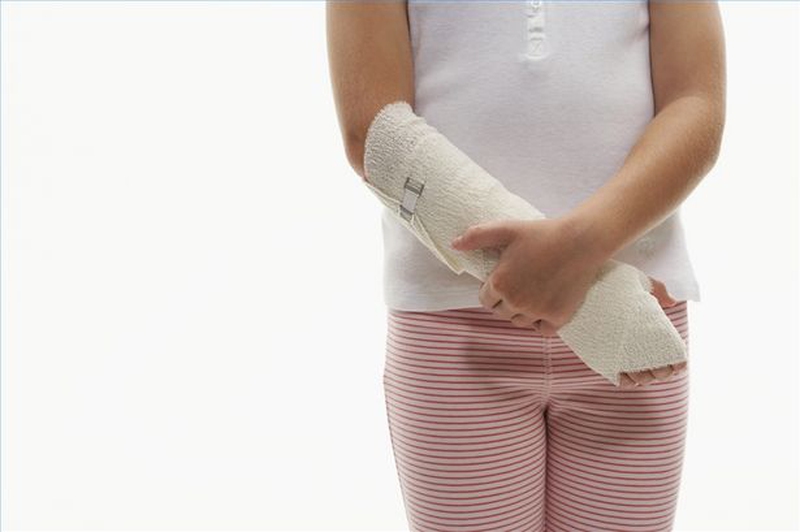A bone bruise can be extremely painful and may lead to a fracture. A bruised bone can cause more pain than the giant swelling of a bruise in the muscle or on the skin. The bone is composed of interconnected fibers with calcium deposited in the spaces between these fibers. These fibers may break when the bone hits something very hard. A serious injury breaks a substantial amount of fibers, which results in a fracture of the bone. When only a few of the fibers are damaged or broken, this will cause a bruised bone only. It is important to understand the situation and take specific measures before it becomes serious.

What Is Bone Bruise?
Also called bone contusion, a bone bruise usually refers to an area of localized tenderness caused by a traumatic injury. There is usually no x-ray evidence to show how severe the injury is. Classified as "sub-periosteal hematomas", these injuries can be extremely painful and usually persist for several weeks.
In some cases, the term "bone bruise" is used to refer to multiple traumatic bone lesions, which are usually different from sub-periosteal hematomas. They are only visible on magnetic resonance imaging (MRI). These injuries are common in both professional and amateur athletes.
Types of Bone Bruise
Sub-Periosteal Hematoma
The injury is characterized by blood accumulation underneath the periosteal of the bone. It usually occurs because of a high-force trauma on the bone and is more common in the lower extremities.
Inter-Osseous Bruising
A repetitive high compressive force on your bone may damage the bone marrow. In this type of bruising, the blood supply within your bone is damaged, which leads to internal bleeding. The injury is more common in professional athletes, such as runners and basketball players.
Subchondral Lesion
In this injury, an extreme compressive force may separate the cartilage from the bone and result in internal bleeding. Sometimes, sheer translational or twisting forces break the cartilage and expose the underlying bone. This injury type is more common in basketball players and usually affects the bones in the feet.
What Are the Symptoms of Bone Bruise?
You will notice certain signs and symptoms when you have a bruised bone. For instance:
Swelling: It is the most common symptom of a bone bruise. It is worth mentioning that swelling can be due to other injuries as well. Sometimes, the swelling you notice is due to a visible bruise on the skin, and not because your bone is injured. An x-ray is probably needed to help identify the real cause of swelling.
Pain: An excruciating pain will be present when you have a bruised bone. You will experience pain at the time of injury, and it may get worse over the next few days. The pain caused by a bruised bone may last for several weeks.
Stiffness: You may notice stiffness when you have a bruised bone. It is more common when the affected bone is near a joint. For athletes, the knee and elbows are the most common injury sites and this is usually accompanied with joint stiffness.
When to See a Doctor
If swelling doesn't go away in a few days and your pain doesn’t subside or even intensifies over time, you need to see your doctor. Sometimes, blood accumulates in the injured area and turns into a blood clot. Symptoms include pain, redness, swelling, and hot skin. If you notice these symptoms, you need to visit your doctor immediately because it could turn into a life-threatening condition.
How to Deal With Bone Bruise
It is usually not possible to prevent these injuries because they happen suddenly, but you can certainly take a few steps to improve your condition. For instance:
Apply Ice: Get an ice bag or put some ice cubes in a plastic bag and apply the icepack to the sore area for 20 minutes, 3-4 times a day.
Keep It Raised: Keep your bruised area elevated to help reduce swelling.
Use Crutches: If it is a leg injury, avoid putting your body weight on your injured leg and use crutches as much as possible. Keep using crutches until the pain subsides or is more manageable.
Use a Splint Carefully: You should avoid putting weight on the extremity if you're using a plaster splint. Avoid getting it wet. It's better to take it off while taking a bath or sleeping at night. Be sure to blow more air into an air splint to make it feel more comfortable. You should try to wiggle your toes in the splint a few times a day. If you feel numbness or tingling, it usually means that your splint is a bit too tight. Have it adjusted by your physician.
Follow Physician's Instructions: When taking OTC or prescription medicines for discomfort, pain, or fever, remember to follow all the instructions.
How Long Does It Take for a Bone Bruise to Heal?
For a bone bruise that's visible on MRI, it usually takes at least two months for the injury to heal completely. Some bone bruises take a whole year to heal, but that's in rare cases only. You need to relax and get a lot of rest during the healing phase. Athletes should consider working with a personal trainer to understand how they can avoid getting hit again on the same area.

View All Comments /Add Comment